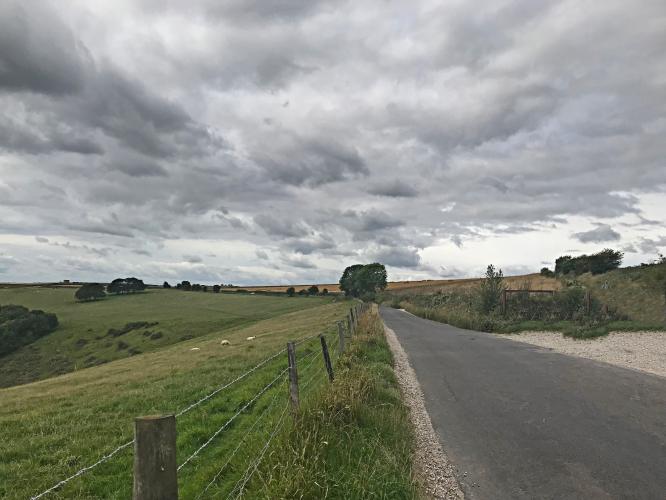
INTRO
PLAN YOUR ROUTE
 We've partnered with Sherpa-Map.com to bring you the best route planning tool. With a PRO Membership you can use this climb as a reference when creating your route.
We've partnered with Sherpa-Map.com to bring you the best route planning tool. With a PRO Membership you can use this climb as a reference when creating your route. ROUTE MAP



 We've partnered with Sherpa-Map.com to bring you the best route planning tool. With a PRO Membership you can use this climb as a reference when creating your route.
We've partnered with Sherpa-Map.com to bring you the best route planning tool. With a PRO Membership you can use this climb as a reference when creating your route. 
This climb begins in the the quaint and rustic, but good sized town of Stenning in the little town of Steyning, West Sussex County (population 5,990, 2011). No problem parking in town and getting to the climb - abundant free parking.
This Simon Warren #21 is brief at 1.5 kilometers, but it is an upper level climb by gradient at 8%. The roadway is marked as Single Track (one lane) but that seemed like too aggressive of a rating as it is effectively 2 unmarked lanes throughout.
The first 100 meters of the climb are fairly flat but it then ramps up to 10% for nearly 400 meters followed by 400 nearly flat meters before shooting up to 11% for the final 700 meters.
Start of 400 easy meters
Our views are blocked by trees for the majority of the climb but we do have some nice open range land views at the top and views of southern England, but not quite to the English Channel which is only 7 kilometers to the south of the finish.
View at the top.
Steepest ½ kilometer begins at 900 meters (11.9%)
The Bostal Road climb enters South Downs National Park at 200 meters:
“The South Downs National Park is England's newest national park, having become fully operational on 1 April 2011. The park, covering an area of 1,627 square kilometres (628 sq mi) in southern England, stretches for 140 kilometres (87 mi) from Winchester in the west to Eastbourne in the east through the counties of Hampshire, West Sussex and East Sussex. The national park covers the chalk hills of the South Downs (which on the English Channel coast form the white cliffs of the Seven Sisters and Beachy Head) and a substantial part of a separate physiographic region, the western Weald, with its heavily wooded sandstone and clay hills and vales. The South Downs Way spans the entire length of the park and is the only National Trail that lies wholly within a national park.” Wikipedia - South Downs National Park
“Home to the Brighton Mitre CC double hill climb, Steyning Bostal is a classic British hill which sales Bostal Road, starting from the town of Steyning – hence its name.
It’s another climb of two parts, with an initial rise that peaks at 18 per cent giving way to a flat section 400m in length. You’ll need to use this to gather your strength, because at the 1km mark you’ll rise up again to a grade of 20 per cent that doesn’t relent until the end of the climb some 500m later.
We won’t blame you if you decide to descend down the other side for coffee by the sea in Lancing or Worthing, but consider returning back up the way you came down, up Titch Hill (see the climb on Strava here) – there’s nothing ‘titchy’ about it!” More
“This was one of my first open hill climbs. I raced in 2004, 2005 and 2006. There is a steady start to the climb before a brief respite and minor downhill. Try to pick up some speed here and use the speed for the last steep section of 16%. A technical and typical British hill climb.” More